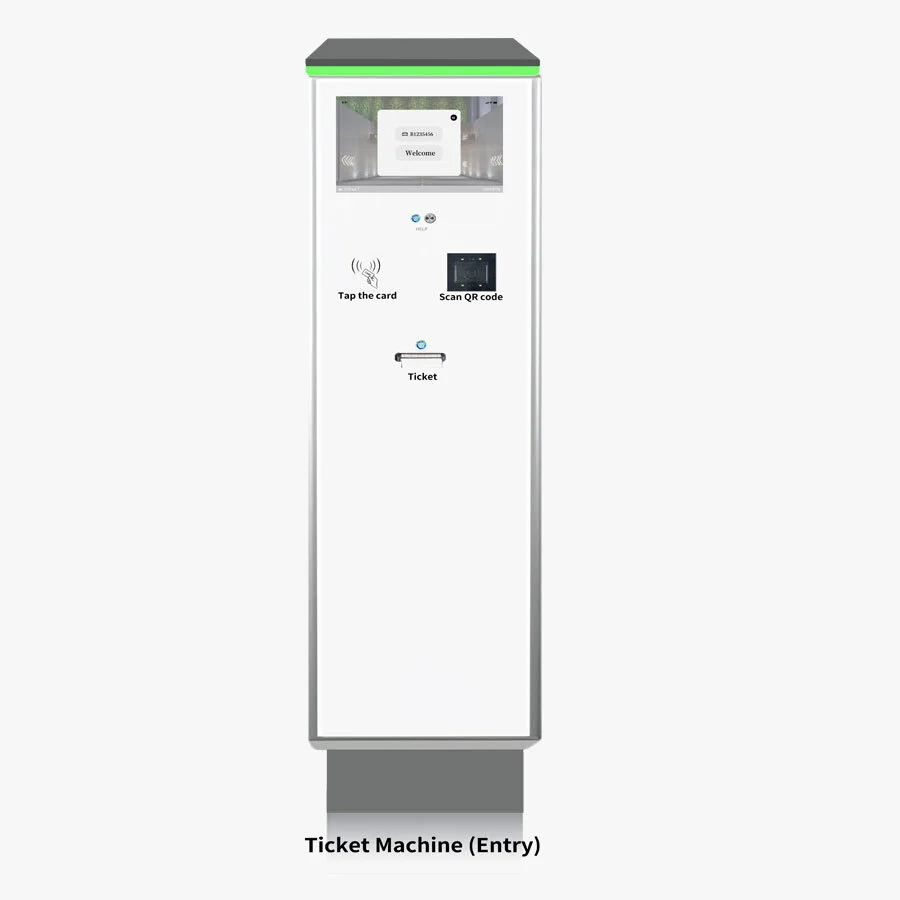Realpark Ticket Parking Management System
"Ticket parking" refers to a parking system commonly used in parking garages, lots, and facilities where drivers take a parking ticket upon entering and use it to pay for their parking when they exit. This system involves the issuance of a physical or electronic ticket that serves as a record of the time when a vehicle entered the parking facility.
Here's how the ticket parking system typically works
1. Entry: When a vehicle enters the parking facility, a ticket dispenser or an automated system provides the driver with a parking ticket. The ticket usually includes information such as the entry time, date, and a unique identifier.
2. Parking: The driver parks the vehicle in a designated parking space.
3. Ticket Validation: The driver keeps the parking ticket with them while they are parked. Some parking facilities may require validation, such as stamping or scanning the ticket, in certain situations, like when parking is provided for free or at a reduced rate (e.g., for customers of a specific business or visitors to an event).
4. Duration of Parking: The driver is charged based on the time the vehicle spends parked in the facility. The parking rates are typically displayed near the payment machines or at the facility entrance.
5. Payment: When the driver is ready to leave the parking facility, they proceed to a payment machine or booth near the exit. At this point, the driver inserts the parking ticket into the machine.
6. Calculation of Charges: The system calculates the parking fee based on the duration of parking. The fee might be determined by an hourly rate or a flat rate, depending on the facility's pricing structure.
7. Payment Methods: The driver can pay the parking fee using various payment methods, such as cash, credit or debit card, or mobile payment apps. Once the payment is made, the machine returns the parking ticket, usually marked as paid.
8. Exit: The driver then uses the paid parking ticket to exit the parking facility.
At the exit gate, the ticket might be scanned or inserted into a machine to confirm payment and raise the barrier.
Benefits of Ticket Parking
1. Flexibility: Drivers can park for as long as they need within the facility's operating hours.
2. Transparent Pricing: Parking rates are typically displayed clearly at the entrance or near payment machines, allowing drivers to make informed decisions.
3. Control: Drivers have control over when they exit the facility and can choose how long to park.
4. Payment Options: Payment can be made using various methods, accommodating different preferences.
5. Revenue Tracking: Parking operators can track revenue and analyze parking patterns to optimize their operations.
6. Ease of Use: Ticket parking systems are relatively straightforward for both drivers and parking operators.
While ticket parking systems are widely used, some parking facilities are transitioning to more advanced systems, such as license plate recognition (LPR) technology, which provides additional convenience and automation for both drivers and operators.
Contact Person: Tina Zhou
Tel: +86-13501586176
5TH FLOOR, XINGUANCHENG COMPREHENSIVE BUILDING, NO. 42, HUIMIN 1ST ROAD, GUIHUA COMMUNITY,GUANTAN STREET,LONGHUA DISTRICT, SHENZHEN, GD,CN 518000






